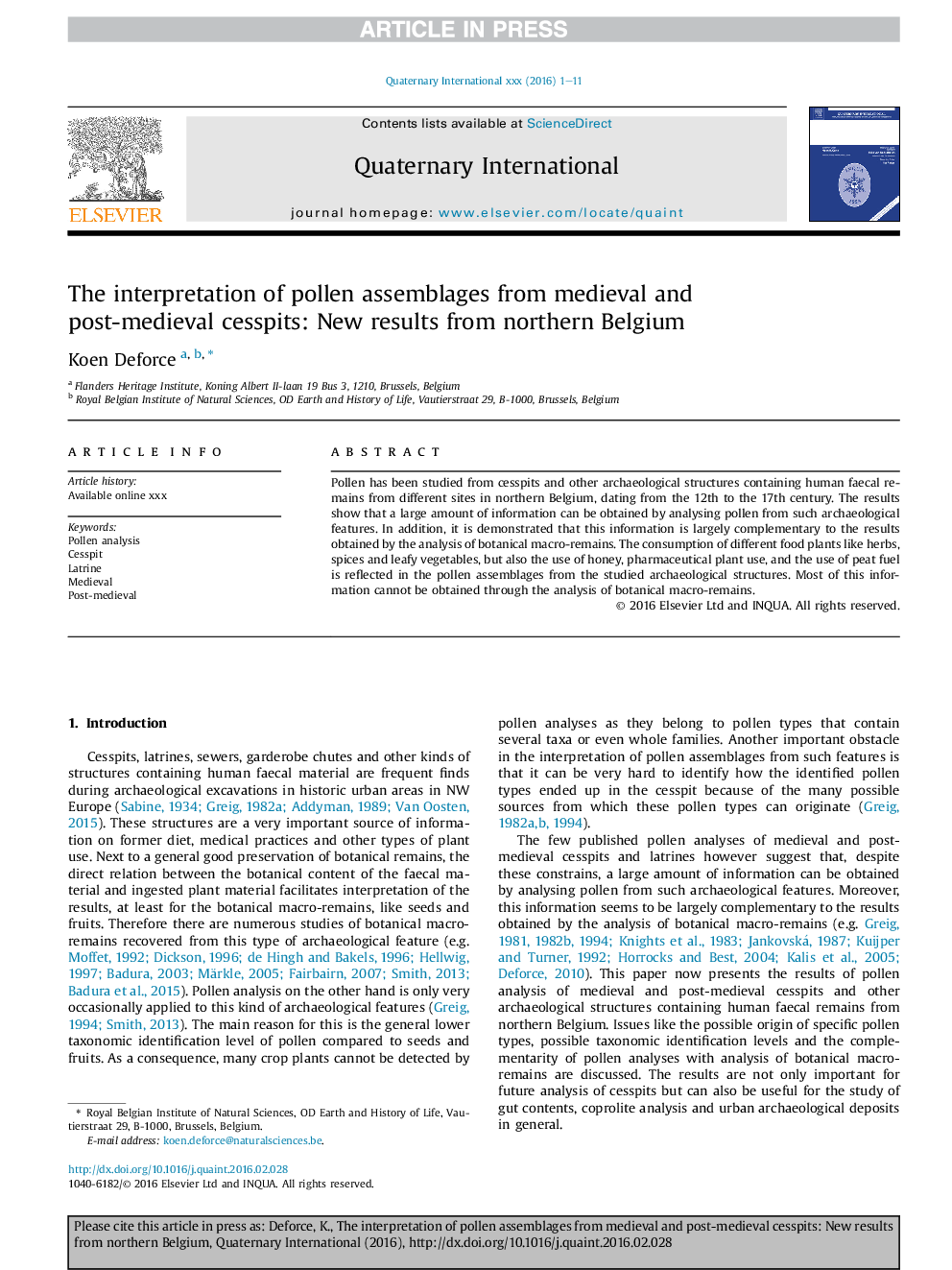| Article ID | Journal | Published Year | Pages | File Type |
|---|---|---|---|---|
| 7451171 | Quaternary International | 2017 | 11 Pages |
Abstract
Pollen has been studied from cesspits and other archaeological structures containing human faecal remains from different sites in northern Belgium, dating from the 12th to the 17th century. The results show that a large amount of information can be obtained by analysing pollen from such archaeological features. In addition, it is demonstrated that this information is largely complementary to the results obtained by the analysis of botanical macro-remains. The consumption of different food plants like herbs, spices and leafy vegetables, but also the use of honey, pharmaceutical plant use, and the use of peat fuel is reflected in the pollen assemblages from the studied archaeological structures. Most of this information cannot be obtained through the analysis of botanical macro-remains.
Related Topics
Physical Sciences and Engineering
Earth and Planetary Sciences
Geology
Authors
Koen Deforce,
